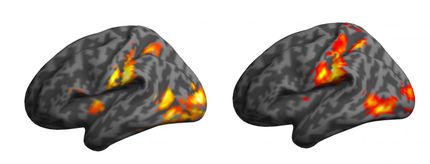Pain sensors specialized for specific sensations
Many pain-sensing nerves in the body are thought to respond to all types of 'painful events', but new UCL research in mice reveals that in fact most are specialised to respond to specific types such as heat, cold or mechanical pain.

succo; pixabay.com; CC0
The study found that over 85% of pain-sensing neurons in whole organisms are sensitive to one specific type of painful stimulus. It was previously thought that most pain-sensing neurons were very similar, so the new finding could enable scientists to develop new specific painkillers for different pain conditions.
Previous research using electrodes to monitor pain-sensing neurons had suggested that they respond to all types of pain, but the new study suggests that this recording technique may have altered the neuron's properties.
"While the majority of neurons are specific to one type of pain, they can become universal pain sensors when the tissue is damaged," explains lead author Dr Edward Emery (UCL Wolfson Institute for Biomedical Research). "This may explain the discrepancies between our findings and those from other studies where more invasive approaches have been used."
The team used a form of fluorescent activity-dependent imaging, where pain-sensing neurons in mice were genetically marked to emit a fluorescent glow when activated. The mice were briefly exposed to either a small pinch, cold water or hot water stimulus on one of their paws to see which neurons were activated. The results showed that over 85% of pain-sensing neurons were specific to one type of pain and did not react to others.
"Our next step is to look at animal models for specific chronic pain conditions to see which neurons cells are activated," says senior author Professor John Wood (UCL Wolfson Institute for Biomedical Research). "We hope to identify the different neurons through which chronic pain can develop, so that focussed treatments can be developed. We use 'chronic pain' to describe all sorts of pain conditions with different causes, but we now need to differentiate them so that we can develop new specific treatments."
Original publication
Most read news
Original publication
Emery, Edward C. and Luiz, Ana P. and Sikandar, Shafaq and Magnúsdóttir, Rán and Dong, Xinzhong and Wood, John N.; "In vivo characterization of distinct modality-specific subsets of somatosensory neurons using GCaMP"; Science Advances; 2016
Organizations
Other news from the department science

Get the life science industry in your inbox
By submitting this form you agree that LUMITOS AG will send you the newsletter(s) selected above by email. Your data will not be passed on to third parties. Your data will be stored and processed in accordance with our data protection regulations. LUMITOS may contact you by email for the purpose of advertising or market and opinion surveys. You can revoke your consent at any time without giving reasons to LUMITOS AG, Ernst-Augustin-Str. 2, 12489 Berlin, Germany or by e-mail at revoke@lumitos.com with effect for the future. In addition, each email contains a link to unsubscribe from the corresponding newsletter.
Most read news
More news from our other portals
Last viewed contents
Internal_ribosome_entry_site
William_Banting
Arthur_Ham

Soft gold enables connections between nerves and electronics
Nobel_Prize_in_Physiology_or_Medicine
Limonene
Untethered_regimen
Radiation_burn
Sour_Cherry






















































